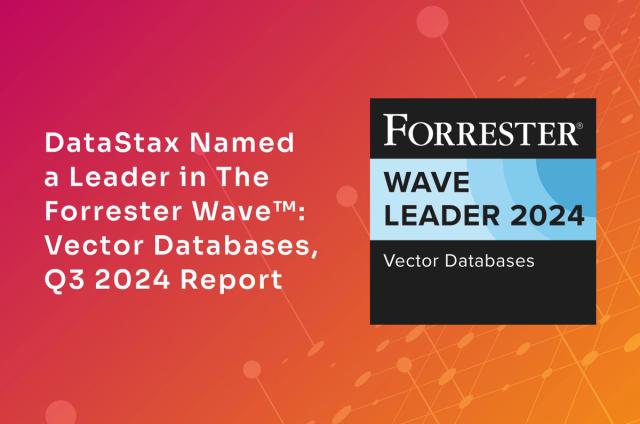Time to Decompress: 3 Big Takeaways from AWS re:Invent

Last week marked the return of an in-person AWS re:Invent after a year-long hiatus due to COVID-19. As always, each day’s keynote included a long list of new product announcements. AWS has become such a juggernaut that a week almost isn’t enough time to squeeze in all the announcements. Seen in a different light, trying to stay up-to-date with the growing catalog of AWS offerings can be completely overwhelming. I’ve seen more than one DevOps talk where the idea of an “AWS compiler” was advanced. Describe what you need, and the compiler will tell you what specific AWS services you need to satisfy your requirements.
The Amazon team compresses so much information into the week of re:Invent that it takes a decompression routine to pull it apart and (hopefully) logically group everything into neat categories. This isn’t a complete list, but here are a few categories that I paid particular attention to after absorbing the entire week.
Serverless all the things!
Years ago, AWS released Lambda, which was billed as a serverless way to run code. The service didn’t take off, but the concept certainly did. In the past year, serverless has gone from being a codeword for running code on-demand to entire services using consumption-based pricing. Several announcements last week were updates to the current product line of AWS data services that are moving from time-based provisioning to consumption-based. This is a response to the wave of serverless offerings that quickly revolutionize how organizations manage IT spending.
We at DataStax wholeheartedly agree that this is the future. DataStax Astra DB and Astra Streaming are strictly consumption-based because we don’t see a future that works any other way with cloud native applications. Another very positive part of this trend is how it contributes to the greening of IT infrastructure. Idle servers consume a similar amount of energy as those that are fully utilized, which is a significant waste. At the scale the world is consuming compute resources, there is a tremendous opportunity for much higher efficiency and consolidation.
AWS blinks on egress pricing
If you regularly look at your cloud billing, you know one of the most stressful line items: egress pricing. Charging a high rate for data leaving has been a long-standing “feature” of every large cloud platform. For Amazon, this has caused many user Twitter rants and, most notably, a place for competitors to make a differentiated stand. Last July, Cloudflare announced they would no longer charge for egress as a direct callout to AWS. It’s not much of a secret why ingress versus egress is so lopsided. Cloud providers are disincentivizing the use of services outside of their network. High egress fees make multi-cloud harder to justify based on cost, so I guess that worked!
In one of those “you could have almost missed it” announcements, AWS made some pretty significant changes to egress pricing (technically this news was shared in a blog post just before the event). Transfer will be free for the first 1TB on CloudFront and 100GB for standard compute. This change is a huge deal for many organizations that use multiple regions and cloud providers, especially Apache Cassandra® users with multiple datacenters. I hope this is a trend that continues into 2022. Network pricing leveling will significantly benefit organizations using Kubernetes and multi-cloud to maintain the best services. Who’s next?
Mainframes are still a big deal
Here’s a surprising fact. Last year (2020) was the biggest sales year for the IBM mainframe business. Ever. Yeah, you read that right, and no, it’s not an Onion headline. An epic amount of “It’s not broke, so why fix it” is buried in literal decades of mainframe-based applications. Apparently, AWS read that report too and, as a result, rolled out a new initiative called “Mainframe Modernization,” which includes software and services to help organizations make a move. Surprisingly, it took this long for a program like this to emerge. To be fair to AWS, who would have predicted this long tail of legacy systems into the 2020s?
In a previous stint as a Cassandra consultant for DataStax, I did a lot of mainframe modernization projects. When you hear people in a meeting talking about “Web services over CICS,” you just can’t help but feel there’s a better way. There is. AWS has decided to make a bigger go at IBM but you don’t need to get in a complicated fight like that. Think incrementally about how you can migrate the critical workloads to more modern, cloud native architectures. Work with a partner to help make it happen and start taking those steps. Hopefully this AWS announcement will get those conversations started.
Time to take a breath
There were a lot more announcements in every possible vertical AWS plays in, but this was just my quick take. If you start now, you might be able to get through all the announcements before the next re:Invent in 2021. Don’t feel overwhelmed though. A million different products aren’t going to be the difference in the digital transformation you know you need to tackle. That lies in your strategy and the execution to make it happen. The DataStax Astra team will be decoding all of the announcements to make our services better and pass along cost savings to you. We do that so when you need to execute, easy scaling with low tradeoffs is a simple click away. So relax. Take a breath and we’ll see you next year at re:Invent to do it all again.




